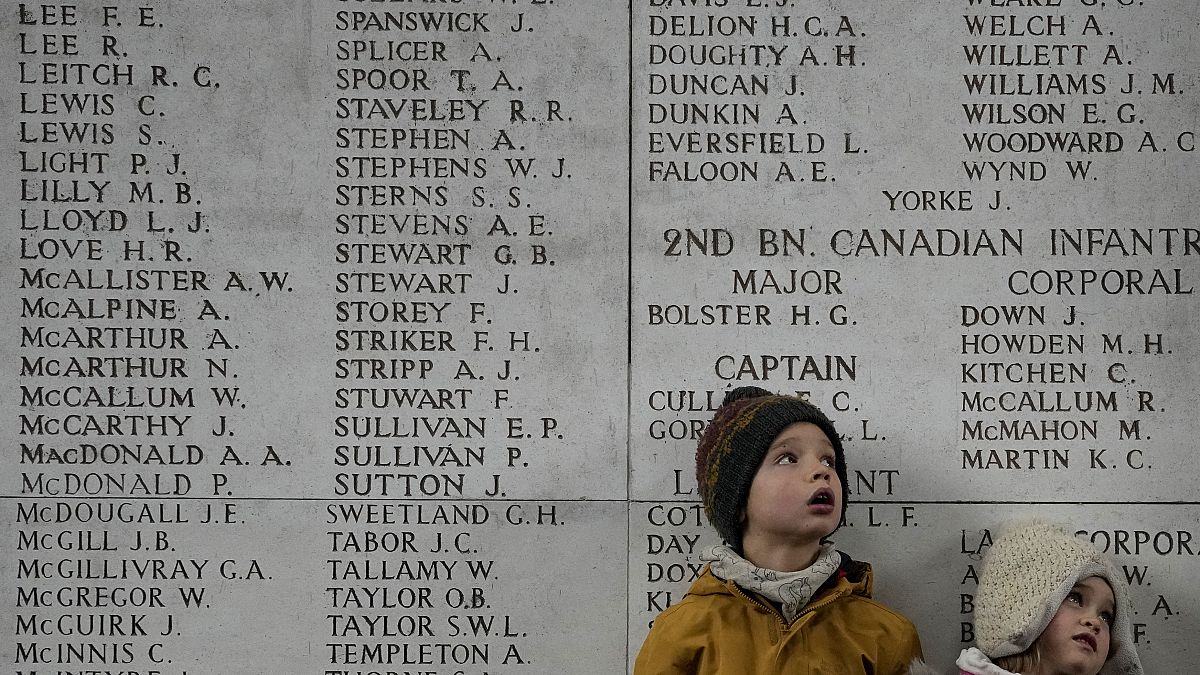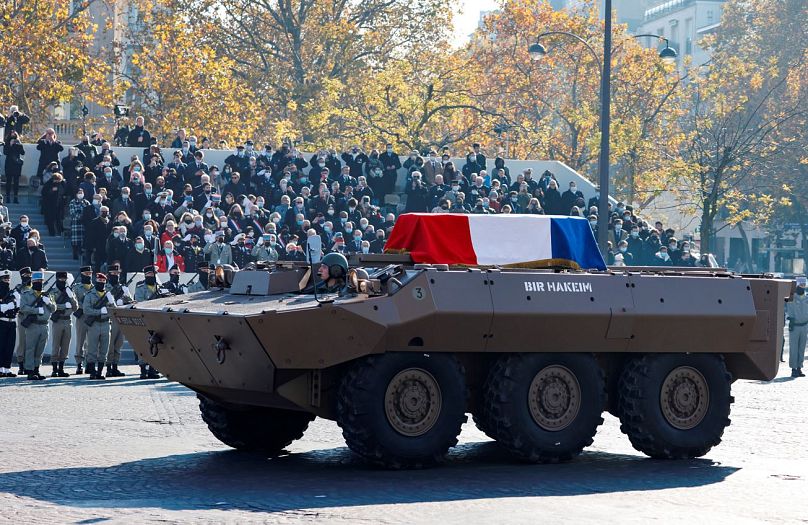Armistice Day events were held around Europe, 103 years since the end of the First World War.
Europeans marked Armistice Day on Thursday by holding ceremonies to remember their war dead.
Commemorations took place in the United Kingdom, Belgium and France a year after COVID-19 disrupted the annual remembrance.
Armistice Day, observed on November 11 each year, marks the day World War One ended: at 11 am on the 11th day of the 11th month, in 1918.
In Belgium on Thursday, the Last Post was sounded under the Menin Gate in Ypres, the site of numerous bloody battles during the war.
Prime Minister Alexander De Croo attended the event, which also included a traditional poppy parade.
The names of around 55,000 soldiers whose remains were never found are engraved under the Menin Gate.
Other allied nations, from the United Kingdom to Australia, New Zealand and South Africa, also had ceremonies and moments of silence to mark Armistice Day.
Across Britain, people paused in workplaces, streets and railway stations for two minutes of silence at 11 am in memory of the country’s war dead.
Camilla, Duchess of Cornwall, joined hundreds of veterans for a ceremony at nearby Westminster Abbey, where she laid a cross amid red poppies, a longstanding symbol of remembrance.
The Armistice Day silence has been observed in Britain since 1919, when King George V proclaimed that “all locomotion should cease, so that, in perfect stillness, the thoughts of everyone may be concentrated on reverent remembrance of the glorious dead”.
UN Secretary-General Antonio Guterres joined national dignitaries in two minutes of silence in the UK pavilion at the ongoing COP26 climate conference in Glasgow, Scotland.
In France, President Emmanuel Macron led a ceremony at Paris' Arc de Triomphe.
He was accompanied by US vice-president Kamala Harris.
"France is freedom, France is transmission. It lives, survives and overcomes its trials because, from generation to generation, women and men pass on the torch of the ideal," he said, in tribute to one of France’s Second World War resistance heroes.
Later on Thursday, he will attend a ceremony for Hubert Germain, who was the last surviving recipient of the Companion of the Order of Liberation (Compagnon de la Libération).
He will be buried at Mont-Valérien in Paris, the main place of execution of resistance fighters during that war.
November 11 marks the date in 1918 when fighting in the First World War came to an end, as the Allies and Germany signed an armistice agreement.
The First World War was dubbed ‘the war to end all wars’ following its cessation, and it cost an estimated 8.5 million military lives, as well as 13 million civilian lives as a direct result of the fighting.
The war pitted the armies of France, the British empire, Russia and the US against a German-led coalition that included the Austro-Hungarian and Ottoman empires.
Last year the coronavirus pandemic wiped out plans for many of the ceremonies that would usually be held.

